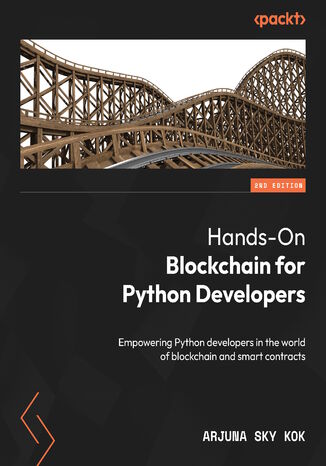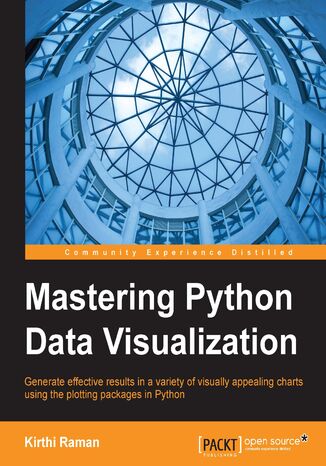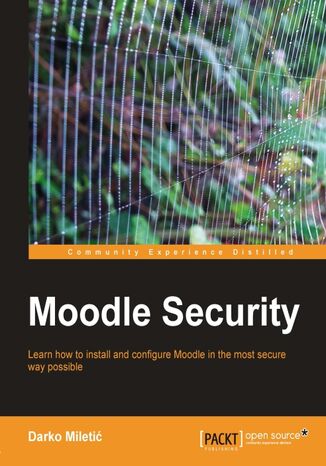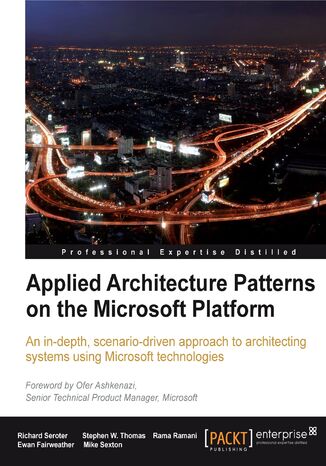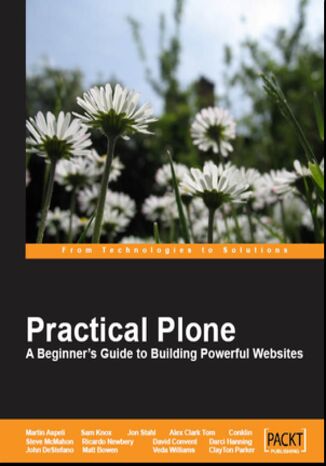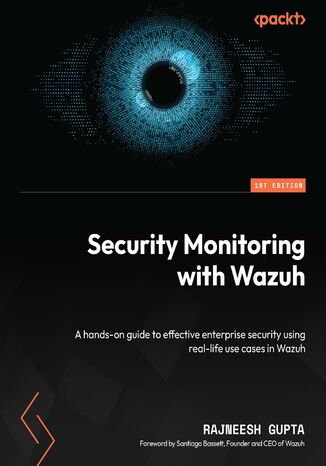Categories
Ebooks
-
Business and economy
- Bitcoin
- Businesswoman
- Coaching
- Controlling
- E-business
- Economy
- Finances
- Stocks and investments
- Personal competence
- Computer in the office
- Communication and negotiation
- Small company
- Marketing
- Motivation
- Multimedia trainings
- Real estate
- Persuasion and NLP
- Taxes
- Social policy
- Guides
- Presentations
- Leadership
- Public Relation
- Reports, analyses
- Secret
- Social Media
- Sales
- Start-up
- Your career
- Management
- Project management
- Human Resources
-
For children
-
For youth
-
Education
-
Encyclopedias, dictionaries
-
E-press
- Architektura i wnętrza
- Health and Safety
- Biznes i Ekonomia
- Home and garden
- E-business
- Ekonomia i finanse
- Esoterecism
- Finances
- Personal finance
- Business
- Photography
- Computer science
- HR & Payroll
- For women
- Computers, Excel
- Accounts
- Culture and literature
- Scientific and academic
- Environmental protection
- Opinion-forming
- Education
- Taxes
- Travelling
- Psychology
- Religion
- Agriculture
- Book and press market
- Transport and Spedition
- Healthand beauty
-
History
-
Computer science
- Office applications
- Data bases
- Bioinformatics
- IT business
- CAD/CAM
- Digital Lifestyle
- DTP
- Electronics
- Digital photography
- Computer graphics
- Games
- Hacking
- Hardware
- IT w ekonomii
- Scientific software package
- School textbooks
- Computer basics
- Programming
- Mobile programming
- Internet servers
- Computer networks
- Start-up
- Operational systems
- Artificial intelligence
- Technology for children
- Webmastering
-
Other
-
Foreign languages
-
Culture and art
-
School reading books
-
Literature
- Antology
- Ballade
- Biographies and autobiographies
- For adults
- Dramas
- Diaries, memoirs, letters
- Epic, epopee
- Essay
- Fantasy and science fiction
- Feuilletons
- Work of fiction
- Humour and satire
- Other
- Classical
- Crime fiction
- Non-fiction
- Fiction
- Mity i legendy
- Nobelists
- Novellas
- Moral
- Okultyzm i magia
- Short stories
- Memoirs
- Travelling
- Narrative poetry
- Poetry
- Politics
- Popular science
- Novel
- Historical novel
- Prose
- Adventure
- Journalism, publicism
- Reportage novels
- Romans i literatura obyczajowa
- Sensational
- Thriller, Horror
- Interviews and memoirs
-
Natural sciences
-
Social sciences
-
School textbooks
-
Popular science and academic
- Archeology
- Bibliotekoznawstwo
- Cinema studies
- Philology
- Polish philology
- Philosophy
- Finanse i bankowość
- Geography
- Economy
- Trade. World economy
- History and archeology
- History of art and architecture
- Cultural studies
- Linguistics
- Literary studies
- Logistics
- Maths
- Medicine
- Humanities
- Pedagogy
- Educational aids
- Popular science
- Other
- Psychology
- Sociology
- Theatre studies
- Theology
- Economic theories and teachings
- Transport i spedycja
- Physical education
- Zarządzanie i marketing
-
Guides
-
Game guides
-
Professional and specialist guides
-
Law
- Health and Safety
- History
- Road Code. Driving license
- Law studies
- Healthcare
- General. Compendium of knowledge
- Academic textbooks
- Other
- Construction and local law
- Civil law
- Financial law
- Economic law
- Economic and trade law
- Criminal law
- Criminal law. Criminal offenses. Criminology
- International law
- International law
- Health care law
- Educational law
- Tax law
- Labor and social security law
- Public, constitutional and administrative law
- Family and Guardianship Code
- agricultural law
- Social law, labour law
- European Union law
- Industry
- Agricultural and environmental
- Dictionaries and encyclopedia
- Public procurement
- Management
-
Tourist guides and travel
- Africa
- Albums
- Southern America
- North and Central America
- Australia, New Zealand, Oceania
- Austria
- Asia
- Balkans
- Middle East
- Bulgary
- China
- Croatia
- The Czech Republic
- Denmark
- Egipt
- Estonia
- Europe
- France
- Mountains
- Greece
- Spain
- Holand
- Iceland
- Lithuania
- Latvia
- Mapy, Plany miast, Atlasy
- Mini travel guides
- Germany
- Norway
- Active travelling
- Poland
- Portugal
- Other
- Przewodniki po hotelach i restauracjach
- Russia
- Romania
- Slovakia
- Slovenia
- Switzerland
- Sweden
- World
- Turkey
- Ukraine
- Hungary
- Great Britain
- Italy
-
Psychology
- Philosophy of life
- Kompetencje psychospołeczne
- Interpersonal communication
- Mindfulness
- General
- Persuasion and NLP
- Academic psychology
- Psychology of soul and mind
- Work psychology
- Relacje i związki
- Parenting and children psychology
- Problem solving
- Intellectual growth
- Secret
- Sexapeal
- Seduction
- Appearance and image
- Philosophy of life
-
Religion
-
Sport, fitness, diets
-
Technology and mechanics
Audiobooks
-
Business and economy
- Bitcoin
- Businesswoman
- Coaching
- Controlling
- E-business
- Economy
- Finances
- Stocks and investments
- Personal competence
- Communication and negotiation
- Small company
- Marketing
- Motivation
- Real estate
- Persuasion and NLP
- Taxes
- Social policy
- Guides
- Presentations
- Leadership
- Public Relation
- Secret
- Social Media
- Sales
- Start-up
- Your career
- Management
- Project management
- Human Resources
-
For children
-
For youth
-
Education
-
Encyclopedias, dictionaries
-
E-press
-
History
-
Computer science
-
Other
-
Foreign languages
-
Culture and art
-
School reading books
-
Literature
- Antology
- Ballade
- Biographies and autobiographies
- For adults
- Dramas
- Diaries, memoirs, letters
- Epic, epopee
- Essay
- Fantasy and science fiction
- Feuilletons
- Work of fiction
- Humour and satire
- Other
- Classical
- Crime fiction
- Non-fiction
- Fiction
- Mity i legendy
- Nobelists
- Novellas
- Moral
- Okultyzm i magia
- Short stories
- Memoirs
- Travelling
- Poetry
- Politics
- Popular science
- Novel
- Historical novel
- Prose
- Adventure
- Journalism, publicism
- Reportage novels
- Romans i literatura obyczajowa
- Sensational
- Thriller, Horror
- Interviews and memoirs
-
Natural sciences
-
Social sciences
-
Popular science and academic
-
Guides
-
Professional and specialist guides
-
Law
-
Tourist guides and travel
-
Psychology
- Philosophy of life
- Interpersonal communication
- Mindfulness
- General
- Persuasion and NLP
- Academic psychology
- Psychology of soul and mind
- Work psychology
- Relacje i związki
- Parenting and children psychology
- Problem solving
- Intellectual growth
- Secret
- Sexapeal
- Seduction
- Appearance and image
- Philosophy of life
-
Religion
-
Sport, fitness, diets
-
Technology and mechanics
Videocourses
-
Data bases
-
Big Data
-
Biznes, ekonomia i marketing
-
Cybersecurity
-
Data Science
-
DevOps
-
For children
-
Electronics
-
Graphics/Video/CAX
-
Games
-
Microsoft Office
-
Development tools
-
Programming
-
Personal growth
-
Computer networks
-
Operational systems
-
Software testing
-
Mobile devices
-
UX/UI
-
Web development
-
Management
Podcasts
We are living in the age of decentralized fi nance and NFTs. People swap tokens on Uniswap, borrow assets from Aave, send payments with stablecoins, trade art NFTs on OpenSea, and more. To build applications of this kind, you need to know how to write smart contracts.This comprehensive guide will help you explore all the features of Vyper, a programming language designed to write smart contracts. You’ll also explore the web3.py library. As you progress, you’ll learn how to connect to smart contracts, read values, and create transactions. To make sure your foundational knowledge is strong enough, the book guides you through Ape Framework, which can help you create decentralized exchanges, NFT marketplaces, voting applications, and more. Each project provides invaluable insights and hands-on experience, equipping you with the skills you need to build real-world blockchain solutions.By the end of this book, you’ll be well versed with writing common Web3 applications such as a decentralized exchange, an NFT marketplace, a voting application, and more.
Security flaws and new hacking techniques emerge overnight – security professionals need to make sure they always have a way to keep . With this practical guide, learn how to build your own virtual pentesting lab environments to practice and develop your security skills. Create challenging environments to test your abilities, and overcome them with proven processes and methodologies used by global penetration testing teams. Get to grips with the techniques needed to build complete virtual machines perfect for pentest training. Construct and attack layered architectures, and plan specific attacks based on the platforms you’re going up against. Find new vulnerabilities for different kinds of systems and networks, and what these mean for your clients.Driven by a proven penetration testing methodology that has trained thousands of testers, Building Virtual Labs for Advanced Penetration Testing, Second Edition will prepare you for participation in professional security teams.
Network Automation Cookbook is designed to help system administrators, network engineers, and infrastructure automation engineers to centrally manage switches, routers, and other devices in their organization's network. This book will help you gain hands-on experience in automating enterprise networks and take you through core network automation techniques using the latest version of Ansible and Python. With the help of practical recipes, you'll learn how to build a network infrastructure that can be easily managed and updated as it scales through a large number of devices. You'll also cover topics related to security automation and get to grips with essential techniques to maintain network robustness. As you make progress, the book will show you how to automate networks on public cloud providers such as AWS, Google Cloud Platform, and Azure. Finally, you will get up and running with Ansible 2.9 and discover troubleshooting techniques and network automation best practices. By the end of this book, you'll be able to use Ansible to automate modern network devices and integrate third-party tools such as NAPALM, NetBox, and Batfish easily to build robust network automation solutions.
Stephen Thomas, Stephen W. Thomas, Mike Sexton, Rama Ramani, ...
Every day, architects and developers are asked to solve specific business problems in the most efficient way possible using a broad range of technologies. Packed with real-world examples of how to use the latest Microsoft technologies, this book tackles over a dozen specific use case patterns and provides an applied implementation with supporting code downloads for every chapter.In this book, we guide you through thirteen architectural patterns and provide detailed code samples for the following technologies: Windows Server AppFabric, Windows Azure Platform AppFabric, SQL Server (including Integration Services, Service Broker, and StreamInsight), BizTalk Server, Windows Communication Foundation (WCF), and Windows Workflow Foundation (WF). This book brings together – and simplifies – the information and methodology you need to make the right architectural decisions and use a broad range of the Microsoft platform to meet your requirements. Throughout the book, we will follow a consistent architectural decision framework which considers key business, organizational, and technology factors.The book is broken up into four sections. First, we define the techniques and methodologies used to make architectural decisions throughout the book. In Part I, we provide a set of primers designed to get you up to speed with each of the technologies demonstrated in the book. Part II looks at messaging patterns and includes use cases which highlight content-based routing, workflow, publish/subscribe, and distributed messaging. Part III digs into data processing patterns and looks at bulk data processing, complex events, multi-master synchronization, and more. Finally, Part IV covers performance-related patterns including low latency, failover to the cloud, and reference data caching.
Practical Plone 3: A Beginner's Guide to Building Powerful Websites
Alex Clark, Clayton Parker, Darci Hanning, David Convent, ...
Plone is a highly extensible content management system built on Zope application server, which is written in Python. But, you need to have good programming skills to design and develop Plone web applications. Does that mean you can't have a Plone website if you don't have good programming skills? Of course not! You can develop your Plone websites through a graphical interface where you don't need to fiddle with code.This book will give you clear understanding of how to use Plone 3 to meet your content management needs. Starting from the basics, this book will walk you through the easy-to-use features of Plone and help you create a feature-rich website through its point-and-click feature.A variety of authors have contributed chapters to this book in the hope that you, the reader, will get a good understanding of Plone and be able to use it effectively. This beginners' guide will introduce the great CMS and its features and then take you further in web development. The book will introduce you to Plone's advanced UI features and show you how to create such a UI platform for your website. You will learn how to manage the contents like web pages, news items, and so on. Working with custom portlets will help you enhance the web components for your site. Each chapter will show you how to add features to your site and develop its functionality. Each chapter can be read independently; you need not go through the previous one to continue further. You can pick and choose the topics depending on your interest and requirement.
Rajneesh Gupta, Santiago Bassett
Strengthen your cybersecurity posture with Wazuh’s powerful security monitoring and compliance capabilities.Security Monitoring with Wazuh is a comprehensive, hands-on guide that helps you deploy, configure, and optimize Wazuh to detect threats, automate incident response, and enforce compliance. With real-world use cases, step-by-step configurations, and tool integrations, this book equips you to build an enterprise-grade defense system.You'll begin by setting up an Intrusion Detection System (IDS) using Wazuh and integrating Suricata to monitor network and host-based threats. Moving forward, you'll explore malware detection, vulnerability assessment, and security automation with SOAR. The book also covers threat intelligence, incident response, and proactive threat hunting, helping you detect and mitigate cybersecurity risks effectively.Beyond detection, you'll enforce compliance with industry standards such as MITRE ATT&CK, PCI DSS, and GDPR, ensuring regulatory adherence and security best practices. By integrating Wazuh with TheHive, Cortex, MISP, and other security tools, you'll streamline threat analysis and response.By the end of this book, you'll master Wazuh's full potential, enabling you to deploy, manage, and enhance security monitoring across your infrastructure—from on-premises to cloud environments.

